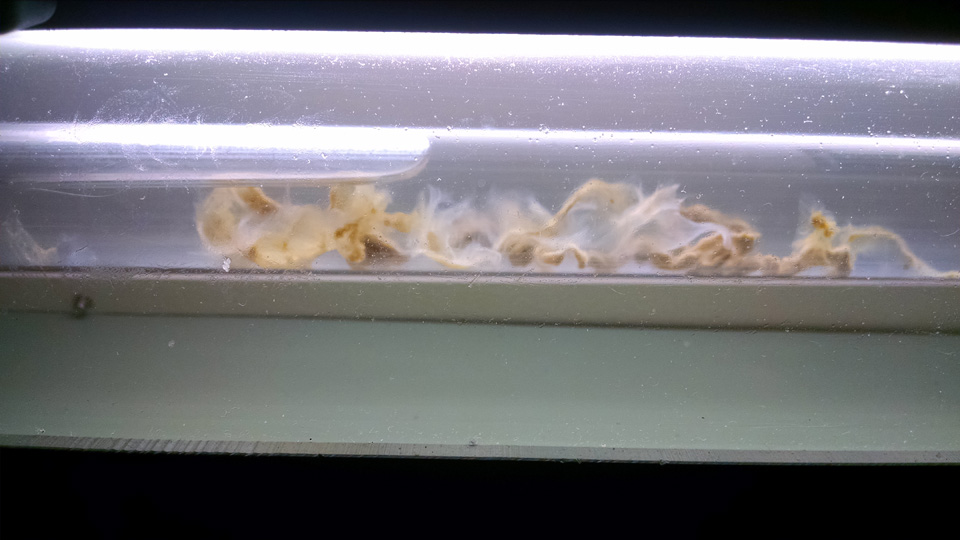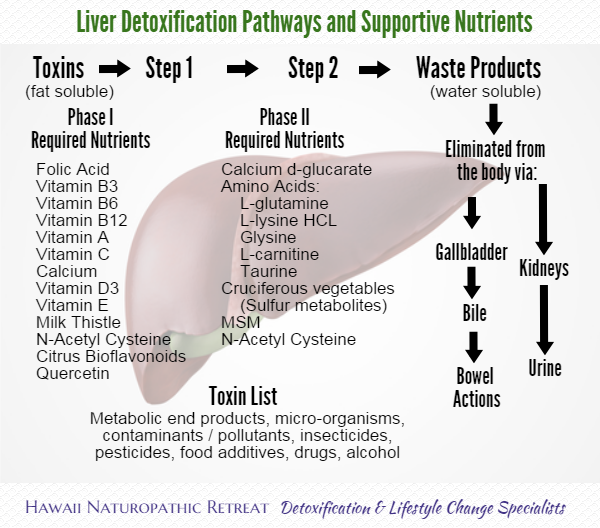9 Ways to Improve Air Quality in Your Home
Indoor air quality matters, because it is a huge contributor to toxic load and carcinogen exposure. Indoor pollution is generally higher than outdoor pollution unless you consciously reduce it by building your house with non-toxic materials, remove your shoes prior to entering your house and use an air filter in urban areas. Air pollution is a common cause of neuro-inflammation and respiratory or cardiovascular disease.
Air is a commonly overlooked nutrient, but it is so essential. Humans can live without food for 4-6 weeks, without water for 3-5 days, but without air only 3-4 minutes. The average person breathes about 20,000 times a day. Air is made up mostly of oxygen and nitrogen. Every time we breathe in, it fills our lungs and supplies our blood with oxygen. Without this process our bodies would not receive the oxygen it needs to stay alive.
The body needs oxygen so it can combust food to release the energy stored in it. In other words oxygen is the fuel that allows our cells to produce energy from the food we eat. Oxygen appears abundant – we are surrounded by a sky full of it. Air creeps in everywhere, all we have to do is open a window. The problem is that air is also polluted so in spite of it appearing abundant and easy to get, we want to give some serious consideration to the quality of air we breathe.
Most people have the erroneous idea that the air inside their homes is cleaner than the air outside. The consensus is that as long as I’m inside a house or building, I don’t need to worry about the polluted air. Unless you’re living in a large cosmopolitan city, right next to a gas station, next door to an oil refinery or next to a freeway, this is simply not true. The air inside our homes are more toxic than outside and we are better off opening our windows and letting the outside air circulate through.
Although outdoor air is polluted, it is usually less polluted than indoor air.
Sources of Air Pollution
There are many things that affect the air quality we breathe such as industrial pollution, perfumes, pesticides, herbicides, smoke, vehicle exhausts, mold, pollens, allergens, indoor and home pollutants. The biggest offenders are industrial polluters. More than 2 million tons of known carcinogens are released into our air, land, and water by industrial facilities around the world each year.¹
Health issues linked to toxins and pollutants in the air include cancer, allergies, asthma, birth defects, infertility, growth problems, weight gain, skin problems, respiratory problems, digestive problems, and overall imbalance within the body.
Indoor Air Pollution
Since we cannot control outdoor air pollution, let’s focus our attention on getting familiar with what influences air quality inside our homes. However, if you are living next to a gas station, busy highway, golf course, conventional agriculture area with heavy spraying of pesticides and herbicides, or commercial livestock farms that produces lots of methane gas, you can consider moving to an area where the air quality is less impacted by these activities.
Dust
Dust in homes, offices, and other human environments contains small amounts of plant pollen, human and animal hairs, textile fibers, paper fibers, minerals from outdoor soil, human skin cells, burnt meteorite particles, and many other materials which may be found in the local environment. – Wikipedia
Our indoor environment is an important source of chemical pollutant exposure. A new study shows that chemicals are not just volatile compounds that off gas into the air, but also accumulate as particles in house dust.
Indoor dust today has a chemical make-up from a wide variety of products. Household items like electronic devices, televisions, furniture, beauty products, cleaning products, and flooring materials shed chemicals that end up in the air and in the dust of our indoor environments.
Allergens
Dust mites accumulate in dust and is a common household allergen. Seasonal pollen are carried indoors by the wind and pet dander may be present in your home regardless of whether you have a pet or not. Cockroach droppings contain a protein than can be a potential allergy trigger. And finally mold and mildew are potential allergens that can cause very serious illness.
Mold
Water damaged homes, especially homes that are made of dry wall and cardboard ceiling is a perfect place for mold to thrive when damp. Although mold is natural in our outdoor environment and even some types indoors, there are species of mold that can wreak havoc on health once they settle inside a home. Since these molds (like Stachybotrys) are often not seen as they can be hidden within the walls or roof and behind the shower, it can be hard to identify that there is a serious health risk to be dealt with.
Toxic molds produce mycotoxins that can make you sick or slowly break down your immune system. Possible reactions include immune suppression and cancer. Mycotoxins are chemical toxins present within or on the surface of the mold spore, which can be inhaled, ingested, or touched.
Toxins: VOC’s
Volatile organic compounds (VOCs) are emitted as gases from certain solids or liquids. A 1985 study (TEAM) by the Environmental Protection Agency showed that the greatest personal exposure to solvents come from air in the home, especially at night. One study identified a total of 586 different chemical pollutants in the indoor air of 52 homes along the Arizona-Mexico border.
Major sources of indoor air pollution include pressed wood products, carpets, paints, and furnishings treated with flame-retardant chemicals, such as mattresses, upholstery, drapes and curtains.
VOCs/solvents are hazardous to our health in many ways:
- They pose a threat to normal development of infant and fetus
- Affect the reproductive system
- Are carcinogen (cancer causing) to the body
- Impact the immune system
- Disrupt the endocrine system (natural hormone release cycles)
List of Indoor Air Quality Hazards In Your Home²
Indoor Air Pollutants Combustion by-products from:
- Fireplaces
- Smoking
- Candles
- Stoves
- Water heaters
- Furnaces
- Attached garages
Solvents (volatile organic compounds) from:
- Paint, paint strippers and other solvents
- Wood preservatives
- Glue
- Upholstery
- Carpeting
- Household cleaners and disinfectants
- Aerosol sprays
- Moth repellents and air fresheners
- Dry-cleaned clothing
- Electronics
- Dryer sheets
- Perfumes
- Stored fueled and automotive products
Dusts and particulates from:
- Molds
- Cigarette smoke
- Infectious agents
- Animal dander
- Chemicals from indoor building supplies
- Pesticides
9 Ways to Improve Air Quality in Your Home
What lifestyle changes can you make to reduce your airborne toxic burden? We’ve put together a list of easily actionable items, to ensure you get the best air quality possible in your home or office.
1. Detox Your Home
Stop using unnecessary pollutants in your home and move paint containers and other chemicals to areas that are far removed from bedrooms, living areas etc. Preferably a separate garage. Switch to natural cleaning products. There is no need to have a particular chemical cleaner for every item in the house: carpet cleaner, oven cleaner, toilet cleaner, all-purpose cleaner, furniture cleaner, window cleaner, etc. Once you let go of this you will quickly realize that you do not need it.
Take off your shoes
All sorts of toxic compounds find their way inside your home via shoes. Studies have shown that herbicides, lead dust, coal tar from asphalt road, Roundup from your lawn and harmful bacteria find they way inside your home through your shoes. Without talking about the noise pollution inflicted on the neighbors below. It is not a common practice to remove shoes in our western culture but it is tradition in many countries such as India, Japan and Hawaii.
Think twice before purchasing new household items
Getting a new couch, pillows, or mattress? Thinking about carpeting or freshly painting walls? These items can be extremely toxic when brand new. Even hardwood floors that are glued together is a problem. These improvements will off gas volatile organic compounds for a considerable time and increase the toxic load of your indoor air.
Choose organic, natural upholstery and pillows whenever possible and look for paint that doesn’t contain VOCs and solvents. Carpeting in the home is not recommended at all, but if you absolutely have no choice or if you’re looking for area rugs, buy natural types of rugs and do research on how the rugs were bound together. Even on natural rugs certain glues can be used that will off gas.
2. No Smoking
If you are a smoker or get visitors that smoke, smoke outdoors and far enough away that the smoke cannot be carried indoors at all. Smoke from cigarettes and other tobacco products will contaminate your indoor air and will stick to the walls and other hard surfaces.
Cigarettes and cigarette smoke contain chemicals, carcinogens and toxic heavy metals like benzene, formaldehyde, pesticides, vinyl chloride, arsenic, cadmium, ammonia, carbon monoxide, hydrogen cyanide, and nicotine. Secondhand smoke contains some 250 chemicals and about 70 cancer causing chemicals.
3. Change Dry Cleaners
Unlike what its name implies, dry cleaning is not actually a ‘dry’ process. Clothes are soaked in a different solvent other than water. The solvent used is typically toxic tetrachloroethylene (perchloroethylene or PERC), which the industry calls PCE.
This is the same solvent that is used in paint strippers and spot removers. PERC lingers in recently dry-cleaned clothing and slowly escape into household air. Bringing your dry cleaning home and hanging it in your closet means that those chemicals will off gas and contaminate your indoor air.
Best option is to research for a dry cleaner that use natural dry cleaning methods and research what PERC-free dry cleaners that advertise themselves as green actually use. When this is not possible, hang your dry cleaning outside. Also, remember unless you perspire very heavily, your clothing probably doesn’t need to be cleaned as often as you think. Spot clean at home and hang in the sun for a few hours to freshen your dry clean only labeled clothes. You can also rethink buying dry clean only clothing in future.
4. Rethink the smells coming from your laundry room
Use unscented natural, biodegradable laundry detergent and fabric softener. Stop using dryer sheets. Dryer sheets are a source of solvent indoor air pollution. What you will notice is that you actually don’t need it. Bicarbonate of soda or Borax make for excellent natural fabric softener and is much kinder to the environment.
5. Keep your mouth closed and breathe through your nose
The nose is designed to trap air pollutants through the hair it contains. Let it do its job. Chronic sinus problems or blocked nose can make this tricky, but observe your habit of breathing and focus on deliberately filling up your lungs properly with each breath and allow the air to push your diaphragm down properly.
6. Keep it clean
Keep your house dust free and clean. As we have seen dust contains allergens, molds, toxic chemicals and more. Wipe down hard surfaces with a moist rag at least once a week. Vacuum floors or sweep and wet mop once a week.
7. Create a schedule to periodically check your house for leaks and mold
This is a must! Create a schedule to check for water leak or water damage that may have gone unnoticed. Especially if you live in areas that get lots of rain. If you want to go the extra mile which is highly recommended check your house for mold spores by using mold detecting kits.
If you see water damage or mold growing take action immediately. Black mold or Stachybotrys thrive on drywall and board-type ceilings, are toxic. They create neurotoxins which damage the nervous system and are powerful carcinogens.
8. Walk in nature and bring air purifying plants indoors
Ever feel better after a walk in the woods? Spend time in nature walking in the woods. Do that as frequently as you can – walking consciously and breathing consciously (deliberately filling your lungs fully with deep breaths). Japanese researchers suggest that we take in beneficial substances when we breathe forest air. Three major factors that research identified that can possibly make us feel healthier after a walk in the woods: beneficial bacteria, plant-derived essential oils and negatively-charged ions.³
Some plants can help to clean the air in the home or office. These natural air purifiers are only effective when there are LOTS of them in a room. Read about plants that can clean indoor air.
9. HEPA while you sleep
A good strategy is to purify the air in your bedroom while you sleep by utilizing a HEPA air purifier. At least your body can get clean air while it’s in rest and repair mode at night. As we mentioned above the 1985 TEAM study showed that the greatest personal exposure to solvents come from air in the home, especially at night.
Controlling air quality inside your home is an important step towards better mental and physical health and a long life. Use the following diagram to identify the possible sources of pollution and remediate it.
Resources for Further Reading
Not Just Dirt: Toxic Chemicals in Indoor Dust
Top 20 Air Purifier Reviews by PlentyAir
Plants That Can Clean Indoor Air
Top 10 Toxic Ingredients Used In The Fossil Fuel Industries
What Chemicals are in Cigarettes and in Cigarette Smoke?
Volatile Organic Compounds’ Impact on Indoor Air Quality
REFERENCES:
- Website: WordoMeters.info, http://www.worldometers.info/view/toxchem/
- Crinnion, Walter (2010-02-09). Clean, Green, and Lean: Get Rid of the Toxins That Make You Fat (Kindle Locations 2186-2188). Turner Publishing Company. Kindle Edition.
- Website: TheConversation.com, https://theconversation.com/why-a-walk-in-the-woods-really-does-help-your-body-and-your-soul-5322
- Mitro, S.D., R.E. Dodson, V. Singla, G. Adamkiewicz, A.F. Elmi, M. K. Tilly, A.R. Zota. 2016. “Consumer product chemicals in indoor dust: a quantitative meta-analysis of U.S. studies.” Environmental Science & Technology.









